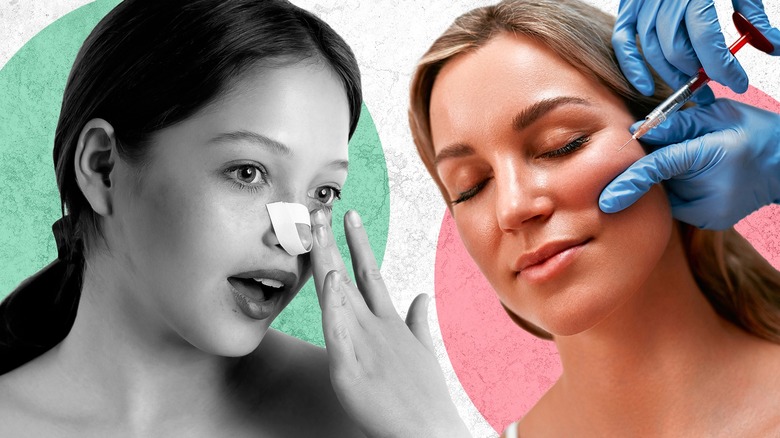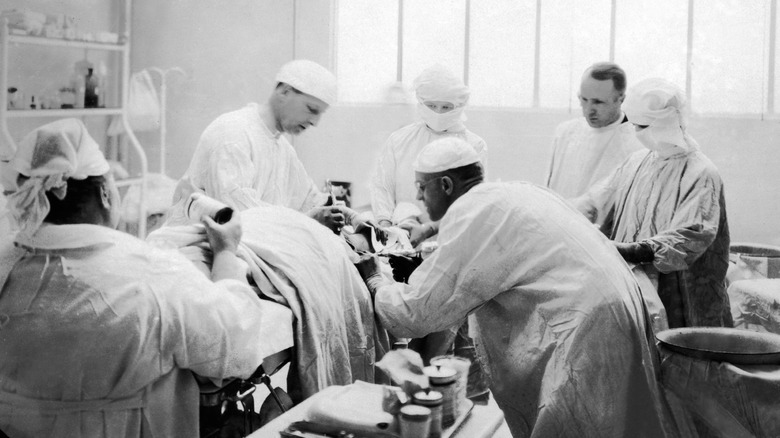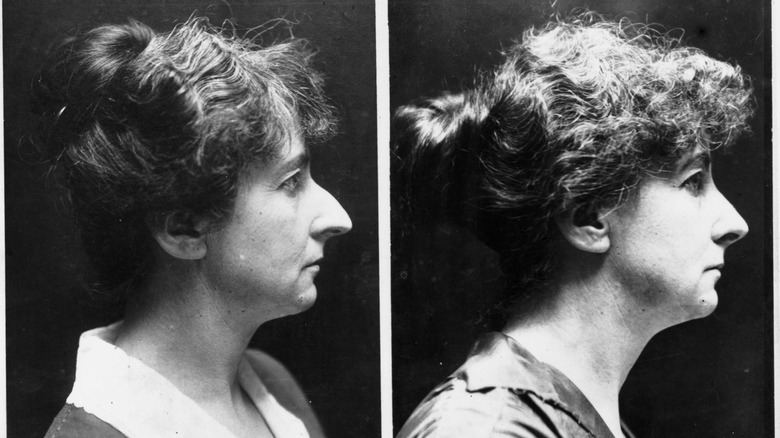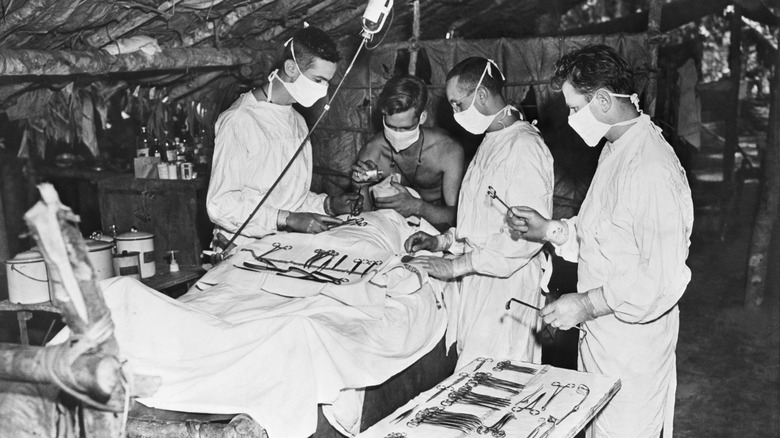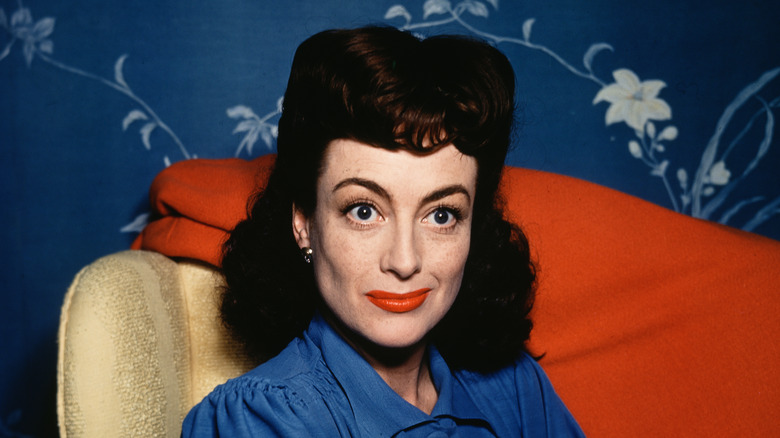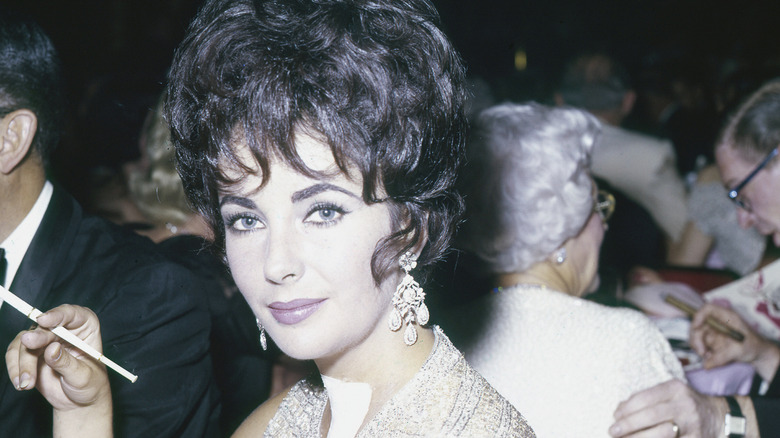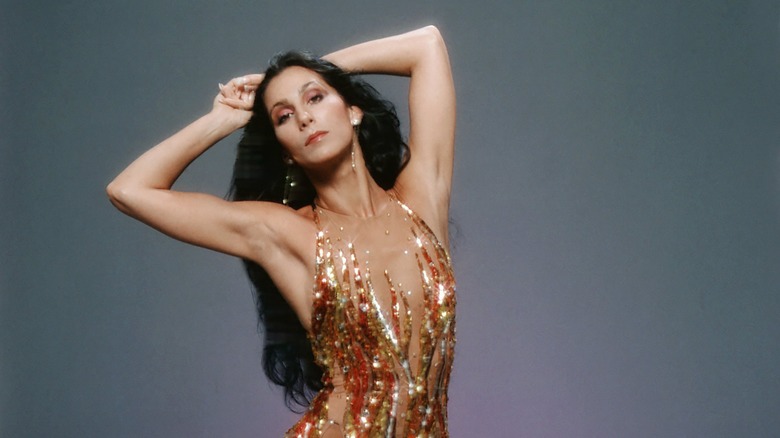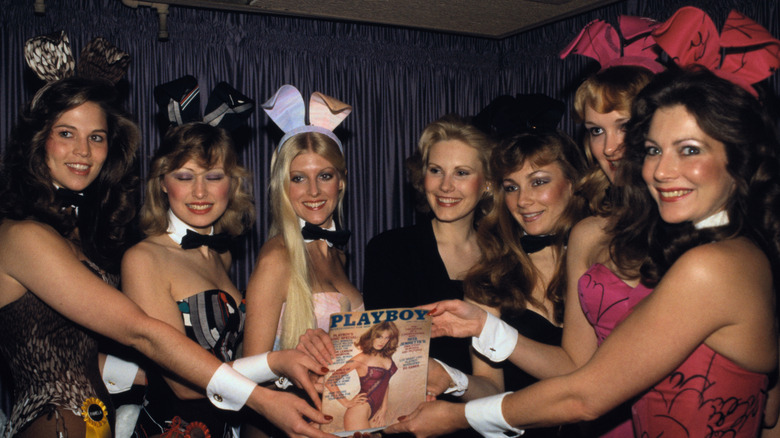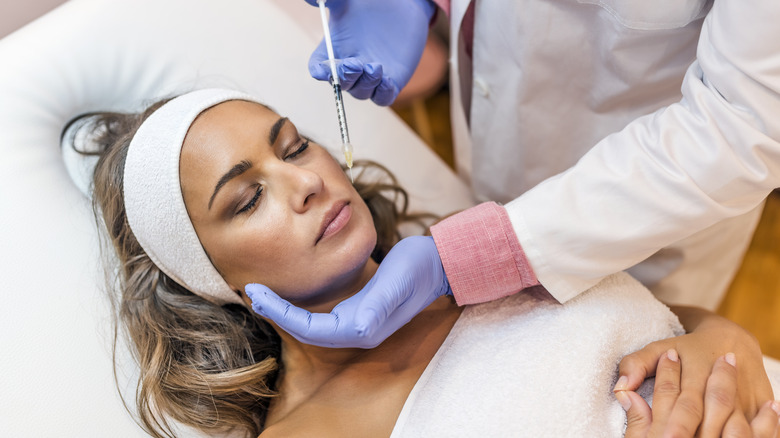100 Years Of Plastic Surgery
The ever-evolving realm of medical science has witnessed remarkable progress and a profound impact on the lives of individuals with regard to plastic surgery. Throughout the last century, plastic surgery has developed into levels that parallel any lofty art form — one which embraces both reconstructive and cosmetic procedures. Improvements made in anesthesia, surgical techniques, and scientific knowledge have allowed surgeons to refine their skills, pushing the boundaries of what was deemed possible.
As a result, plastic surgery has gradually gained recognition as a specialized field dedicated to restoring, enhancing, and harmonizing the human form. However, as plastic surgery has grown in popularity, it has also faced ethical and societal challenges. Discussions around body image, cultural standards of beauty, and the responsible use of surgical interventions have become increasingly important in shaping the future of the field and public perception.
In this exploration of 100 years of plastic surgery, we'll travel through the last century to delve into the milestones, breakthroughs, and social dynamics of the practice. We'll examine the achievements made by the pioneering medical practitioners and have a look at the profound impact plastic surgery has had on society and the accepted beauty standard. Join us as we unravel the tapestry of a century of enhancements, where science, artistry, and compassion converge to reshape lives and empower individuals to embrace feeling beautiful.
1920-1929: Setting the stage for modern plastic surgery techniques
The cataclysmic events of World War I left an indelible mark on the course of human history, profoundly impacting numerous aspects of society, including the field of plastic surgery. The horrors of trench warfare, shrapnel wounds, and advances in weaponry led to an unprecedented demand for reconstructive surgery. The unprecedented scale and intensity of the conflict resulted in an alarming number of soldiers suffering severe facial injuries and disfigurements, necessitating innovative medical interventions to restore their lives and identities. Doctors developed new techniques and procedures to restore not only physical form but also functional capabilities, allowing wounded soldiers to reintegrate into society.
Furthermore, the wartime experience fostered the establishment of plastic surgery as a distinct medical discipline. Surgeons recognized the need for specialized training and dedicated research, leading to the establishment of academic programs and societies focused on plastic and reconstructive surgery. The dedication and pioneering spirit of those early plastic surgeons not only restored the lives of countless soldiers but also laid the groundwork for a discipline that continues to improve the lives of people worldwide, enhancing their physical appearance, function, and self-confidence.
1930-1939: Legitimization
Building upon the foundations laid during World War I, the field of plastic surgery continued to evolve, expanding its scope beyond reconstructive procedures and silently exploring the realm of aesthetic enhancements. Surgeons recognized the potential to enhance physical appearances and address aesthetic concerns beyond the scope of reconstructive interventions, although it was from this space that cosmetic surgery would later bloom.
During this era, the American Society of Plastic Surgeons and the American Board of Plastic Surgery are founded to regulate and advance the practice. In the 1930s, Dr. Jacques Joseph, the "father of modern aesthetic surgery," according to the Indian Journal of Plastic Surgery, made significant contributions to rhinoplasty techniques, introducing new approaches to achieve more natural-looking results. His innovative methods paved the way for modern rhinoplasty procedures, making the "nose job" the commonplace procedure it is today.
At the time, plastic surgery was focused on reconstructive procedures, not on improving a patient's physical appearance. However, there were doctors who chose to perform cosmetic surgery on the breasts or purely cosmetic rhinoplasty, although "such work occurred quietly, without fanfare," Dr. Richard L. Dolsky wrote in the American Journal of Cosmetic Surgery.
1940-1949: Wartime advancements
As with the first world war, the second world war had a profound impact on plastic surgery, as it once again presented an urgent need for reconstructive procedures. The increased use of explosive weapons and their impact resulted in a higher prevalence of severe burns, complex facial wounds, and disfigurements. Building upon the knowledge gained from World War I, plastic surgeons continued to refine their techniques and approaches to address the challenging cases which arose from the war — in particular, the development of skin grafting techniques.
During World War II, one of the many notable plastic surgeons who made significant contributions was Sir Archibald McIndoe. Practicing in England, Dr. McIndoe's expertise and skills in plastic surgery were vital in treating the extensive facial injuries suffered by soldiers — but not just physically. According to The National WWII Museum, McIndoe "provided life-changing operations" and "believed that the soldiers needed to heal mentally, emotionally, and physically." By "bathing the men in saline," those with burns and other wounds could be treated in a gentler way, which "increased survival rates."
It's important to note that although the advances in facial and skin reconstructive surgeries were seen as boons to the medical profession, cosmetic surgery was still a big no-no (at least publically). In 1947, the first president of the American Academy of Cosmetic Surgery, Richard C. Webster, couldn't have made his viewpoint clearer when he said, "Reconstruction is in, cosmetic is out" (via the American Journal of Cosmetic Surgery).
1950-1959: The secret plastic surgeries of Hollywood
By the '50s, plastic surgery made its way from wartime heroes to the elite. And in the glamorous world of Hollywood during the 1950s, plastic surgery was a carefully guarded secret, with celebrities discreetly seeking out the expertise of trusted surgeons with the support of the production studios they worked for.
In the intensely competitive environment of Hollywood, many of the biggest stars of the era (allegedly) underwent cosmetic procedures to enhance their beauty and correct any perceived imperfections. Fitting the beauty standard has always been important, and doubly so for anyone working in the "industry" where youth and beauty are placed above all. Some of the rumored golden-age starlets to go under the knife include Elizabeth Taylor, Joan Crawford, and Marilyn Monroe. At this moment in time, the subject of plastic surgery was still very taboo, so most of the accused vehemently denied any involvement with cosmetic procedures.
As plastic surgery became more prevalent in Hollywood, it became an integral part of maintaining the industry's beauty standards. Stars were expected to keep a youthful and flawless image. Cosmetic procedures became the vehicle for achieving that ideal. During this time, however, plastic surgery was not overdone or made obvious — minor adjustments here and there was de rigor. It wouldn't be until later that the practice would be accepted openly, and more extreme surgeries would become commonplace.
1960-1969: Progress continues
The 1960s marked a transitional period toward the modern plastic surgery we know today. With the rise of television and the broader reach of mass media, beauty standards were climbing higher than ever, so plastic surgery became a way to achieve and maintain the silver screen look. As the range of procedures available started to increase, so, too, did the public interest.
Dr. Richard L. Dolsky states in his article "Cosmetic Surgery in the United States: Its Past and Present," published in the American Journal of Cosmetic Surgery, that "by the end of the 1960s, the foundations for a true specialty in cosmetic surgery had been laid." Technological advancements and interdisciplinary collaboration contributed to the growth of aesthetic surgery in the 1960s. By 1967, the American Society of Aesthetic Plastic Surgery was founded, publically showcasing the shift of plastic surgery as a strict reconstructive method to the world of cosmetics and aesthetics.
Surgeons refined their techniques, improving surgical outcomes and reducing risks. Anesthesia and sterilization methods were further developed, increasing the safety and comfort of cosmetic procedures. Rhinoplasty, facelifts, and breast augmentations were the most popular options for those looking to refine their features or to create a more appealing, youthful look. Not all procedures were surgical — chemical peels were also being used by doctors to rejuvenate skin.
1970-1979: Bosoms blossom
In the 1970s, the cultural attitudes towards plastic surgery were more tolerant than ever before. Some celebrities, like Cher and Dolly Parton, were brave enough to be open about their experiences with cosmetic procedures, helping to normalize the idea of enhancing one's appearance through surgical means. The formerly taboo topic was more openly discussed than ever, although many female celebrities who opened up about their surgeries were heavily judged and criticized.
As medical technology advanced during this time period, the practice of plastic surgery became more and more integrated with surgical practice. American doctors were able to learn new methods from European doctors like Susan Noel, a French dermatologist at the forefront of facelifts, skin rejuvenation, and eyelid surgery practices. During the '70s, the demand for breast augmentations was bigger than ever before, with manufacturers "racing to make bigger and better implants," according to specialist plastic surgeon Dr. Carmen Munteanu (via Aesthetik Profile).
Liposuction also gained major traction in the '70s. It was refined during this time period by plastic surgeons working with doctors from other medical specialties, such as general surgery, gynecology, and dermatology. Their joint efforts made liposuction and the removal of unwanted fat deposits from various parts of the body safer and more efficient. The dream of slimming down without diet and exercise had finally been manifested, for better or worse.
1980-1989: Thin is in (but not the breasts)
The 1980s was a time of excess and indulgence, and this ethos extended to the realm of plastic surgery. The field experienced a surge in popularity, and this is a time when the practice really came into its own as a cultural phenomenon. Fueled by the images of women in men's magazines like Playboy, the desire for larger breast sizes that went beyond what might pass as "natural" became normalized in the 1980s.
Surgical techniques for breast augmentation in the 1980s focused on creating a more prominent and rounded breast shape. Silicone breast implants were widely used for augmentation; it was thought that these implants offered a natural yet full look and feel compared to their saline counterparts. Unfortunately, this procedure wasn't always safe. In 1982, the FDA classified breast augmentations as class III, which is the highest-risk category, due to "reports of adverse events" (per Reuters). More reports of "botched" augmentations began to surface, describing silicone leakage and its harmful impact on health.
Liposuction, on the other hand, became safer than before with the introduction of the "tumescent" technique. This technique, according to a review published in the Journal of Cutaneous and Aesthetic Surgery, involves the injection of a local anesthetic solution into the targeted fat deposits before suctioning, which helps minimize bleeding and pain during the procedure. The tumescent technique significantly reduced the need for general anesthesia and diminished risks associated with excessive blood loss.
1990-1999: Smoothing out the wrinkles
The 1990s saw a big boom in plastic surgery. According to Allure Plastic Surgery, about 1 million cosmetic procedures were performed, "cementing plastic surgery's place in shaping the bodies of our pop culture icons," with liposuction and breast augmentations being the most popular procedures. That's right: Although still considered a high-risk procedure — with silicone implants being banned by the FDA in 1992 — breast augmentation remained a sought-after procedure during this time, with patients opting for saline implants.
Improved techniques, such as endoscopic facelifts that utilized tiny incisions and specialized instruments, per Dr. Andrew Denton, a board-certified facial plastic surgeon, resulted in shorter recovery times and more natural-looking outcomes. The desire to combat signs of aging and achieve a more youthful appearance remained a driving force behind these procedures. It wasn't just women who were looking for aesthetic enhancement either — hair transplant surgery became very popular for men.
Another notable development in the 1990s was the rise of minimally invasive procedures such as Botox injections, lip fillers, and chemical peels which offered youth and beauty without going under the knife. These services offered relatively quick results with minimal downtime, appealing to individuals seeking subtle improvements or rejuvenation without undergoing invasive surgery.
2000-2009: Reality TV and the continued love of lipo
The early 2000s witnessed an increase in combination procedures, where multiple surgeries were performed simultaneously or in close succession to achieve more comprehensive results. Thanks to Y2K reality TV shows like "Extreme Makeover," "The Swan," "Addicted to Beauty," and "I Want a Famous Face" the topic of plastic surgery — and shocking cosmetic transformations — was entering American homes in more ways than ever before.
And, continuing the "thin is in" trend decades prior, liposuction was still a fan favorite. According to an article published in the research journal BMJ, "more than 670,000 liposuction procedures were performed in the year 2000," which was "an almost 10-fold increase on 1990." Chemical peels and injections also continued to rise exponentially, with over 2.5 million procedures performed during that time as well.
As noted, the decade prior saw concerns regarding the safety of silicone breast implants. However, in 2006, the 14-year ban was lifted on silicone breast implants in America, making the procedure doable for patients over 22 years old. That same year, in 2006, the total number of cosmetic procedures as a whole skyrocketed to 16.2 million — a number that had nearly doubled since 2003 (per the American Society of Plastic Surgeons).
2010-2019: Big booties and plump lips
The "Brazilian Butt Lift," or BBL, was introduced to the world by Brazilian plastic surgeon Ivo Pitanguy in the '60s — but it really took off in the 2010s. It has since become a global trend, fueled in part by the influence of celebrities and social media. According to the American Board of Cosmetic Surgery, The BBL is a cosmetic procedure involving the reshaping of the buttocks by removing fat from one area of the body, typically through liposuction, and transferring it to the buttocks to enhance their size, shape, and contour. The procedure has become associated with achieving a fuller, rounder, and more lifted buttock appearance. Celebrities like Kim Kardashian and Nicki Minaj contributed to the popularization of this procedure in the 2010s.
And the motto, "the bigger, the better," didn't stop at the booty — big, plump lips were also on the rise during this time. The desire for fuller lips can be traced to the rise and proliferation of social media and to celebrities such as Kylie Jenner, who has admitted to undergoing lip filler injections to get plump, juicy lips. The appeal of lip injections lies in their ability to provide immediate results with minimal downtime. And, in 2015, lip augmentations hit an all-time high, with over 27,000 procedures performed in that year alone, which is "about one every 20 minutes" (via CBS News).
2020-Present: A new attitude
Today, there is a growing recognition that plastic surgery is not solely about physical appearance but also about overall well-being. The growing "body positivity" movement and increased emphasis on inclusivity have influenced the realm of plastic surgery. These days, there is a greater appreciation for diverse body types, and the desired outcome for cosmetic procedures is that it will heighten self-esteem and promote self-acceptance.
This has led to a more nuanced approach in plastic surgery, with procedures tailored to individual needs and desires rather than conforming to specific beauty standards. Many patients often seek procedures that enhance their existing features rather than striving for extreme transformations. Some surgeons are placing greater emphasis on patient education, mental health, and ensuring realistic expectations.
Plastic surgery has become increasingly personalized, with procedures tailored to meet each patient's unique goals and preferences. Surgeons employ advanced imaging technologies, such as 3D simulations, to help patients visualize potential outcomes and make informed decisions. Customized treatment plans are developed, considering factors like facial structure, body proportions, and individual concerns. With the modernization of plastic surgery and the inclusiveness of such procedures, it can be predicted that plastic surgery will remain a highly individualized field, and each patient's goals and preferences will ultimately shape their surgical journey.
